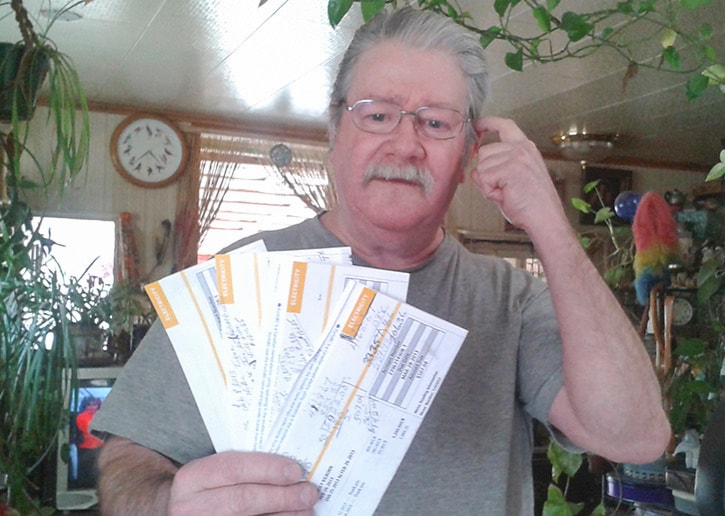Nearly 150 complaints about FortisBC’s new two-tiered electricity prices have prompted the B.C. Utilities Commission to order an evaluation of the new rate structure sooner than planned.
FortisBC was scheduled to report on its conservation rate by the end of April 2014, but the commission has now bumped up the deadline for a preliminary study to Oct. 31.
In the one year that followed the July 2012 approval of the new rate structure, the BCUC received 149 complaints, a number it deemed “significant,” according to an order paper issued Aug. 22.
The order compels FortisBC to prepare a report that includes information about how much energy has been saved by the new rate structure, how it has affected company revenue, and its impact on customers who don’t have access to natural gas to heat their homes.
“They’ve been listening to me, I guess, because I was the biggest complainer,” said Robby Kilborn, an Olalla resident who saw his power bill quadruple to $2,100 for a four-month period last winter.
The conservation rate reduced the price for energy use below 1,600 kilowatt-hours in each billing cycle, but increased the cost for consumption over that mark.
While FortisBC expected 75 per cent of its customers would pay less under the new structure, people like Kilborn, who have no choice but to heat with electricity, have seemingly paid much more.
“I’m glad they ordered the report on it,” he said.
Keremeos Mayor Manfred Bauer has previously called on the BCUC to increase the lower threshold and is trying to arrange a meeting with the B.C. energy minister to discuss the matter.
He thinks the 149 complaints are just the tip of the iceberg.
“Not everybody wrote directly to the BCUC, so there’s a lot more. A lot of people wrote to their MLAs or they sent it to the government,” Bauer said.
“I think the number is actually quite a bit higher.”
FortisBC spokesperson Neal Pobran said the company volunteered to complete the preliminary study.
“We were sensing that some of our customers we’re paying more from this rate, so I think they spoke out and that’s part of why we want to speed up this report, is because we were hearing from our customers,” he said.
Pobran said the volume of complaints to the BCUC “is probably more than they (usually) receive,” but he noted it represents just a fraction of the company’s 130,000 customers in the Southern Interior.
It’s expected the report will provide recommendations, plus “evaluate if the conservation rate’s impact is consistent with expectations and discuss any other lessons that have been learned” since implementation, BCUC acting director of customer relations Kristine Bienert said in a statement.
“The BCUC will determine what actions, if any, should be taken once the report has been received and the data has been reviewed in full,” she said.
In its original January 2012 decision on the two-tiered rate structure, the BCUC noted it is “befitting an era where the provincial legislation encourages conservation.”
Three resolutions regarding the issue are on the agenda for the Union of B.C. Municipalities convention later this month in Vancouver.
The resolutions call for the B.C. government to review and amend the two-tiered rate structure in areas where natural gas is not available.
Penticton MLA Dan Ashton said he’s aware of the situation, partly because FortisBC has sought him out to discuss it.
“My personal opinion is I think the threshold needs to be adjusted,” he said.
Ashton noted the decisions ultimately rest with the BCUC, although he’s working to keep the issue “front and centre.”
